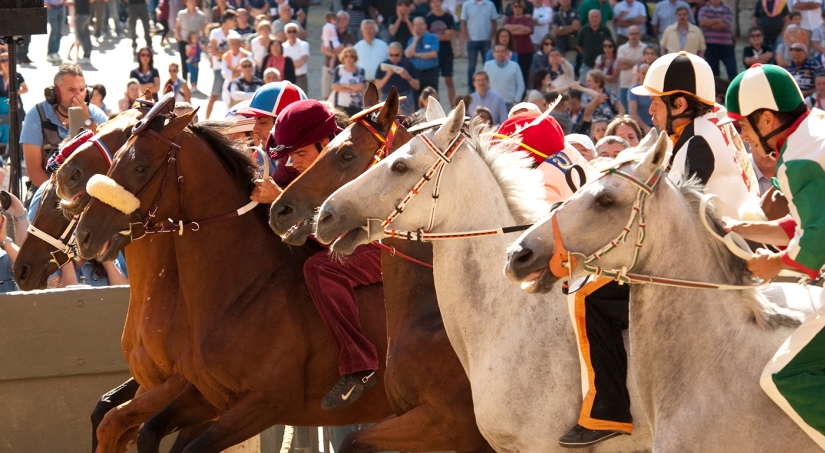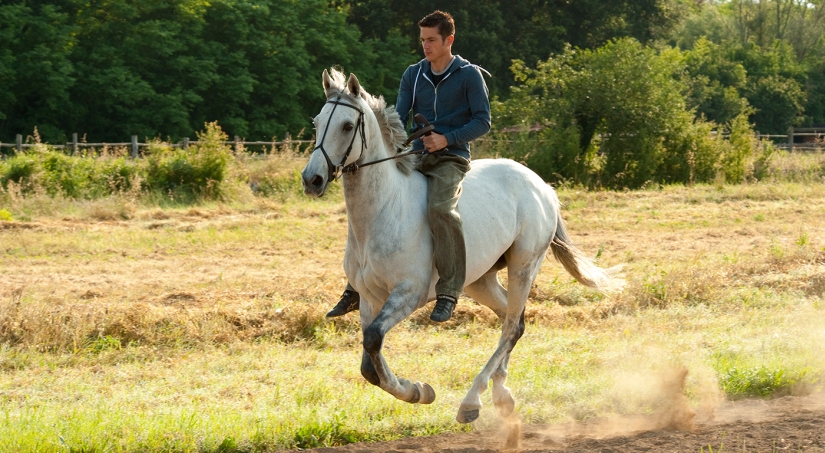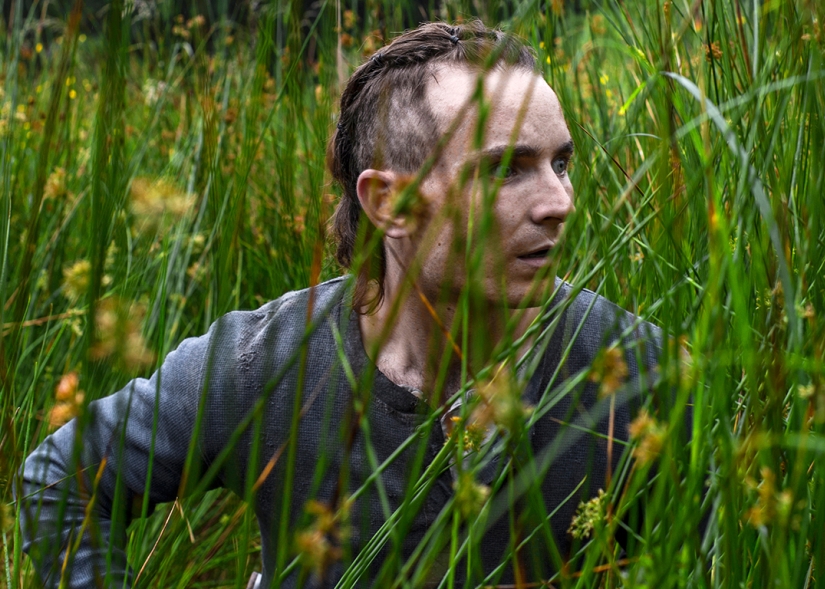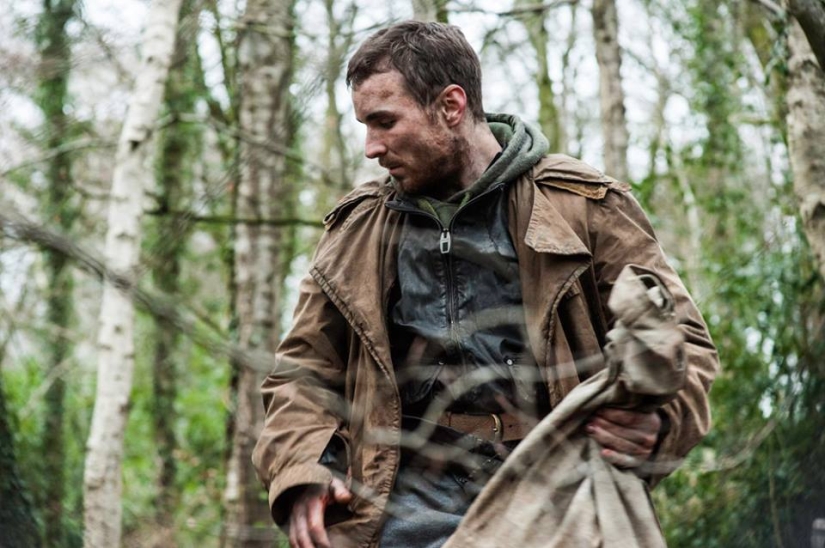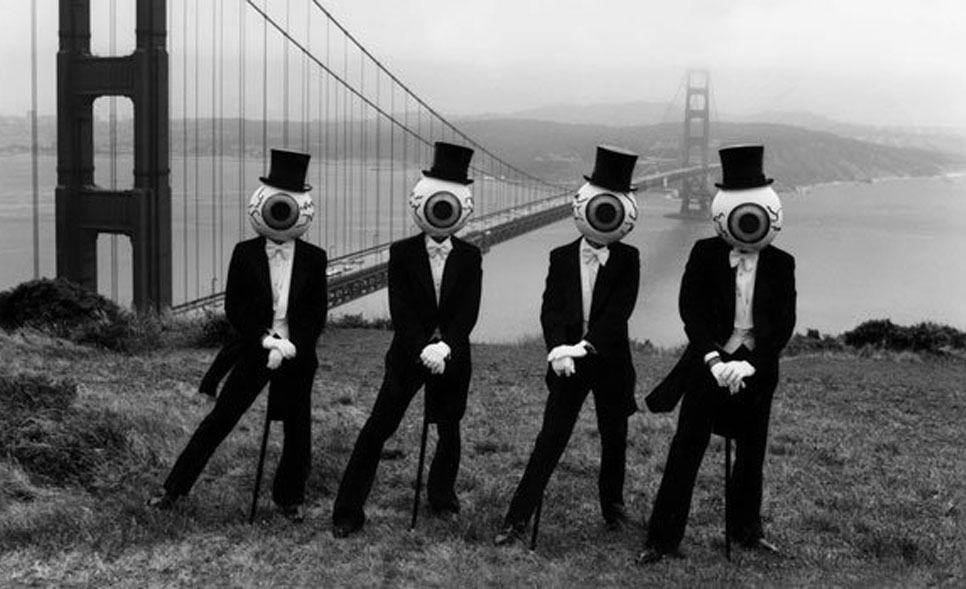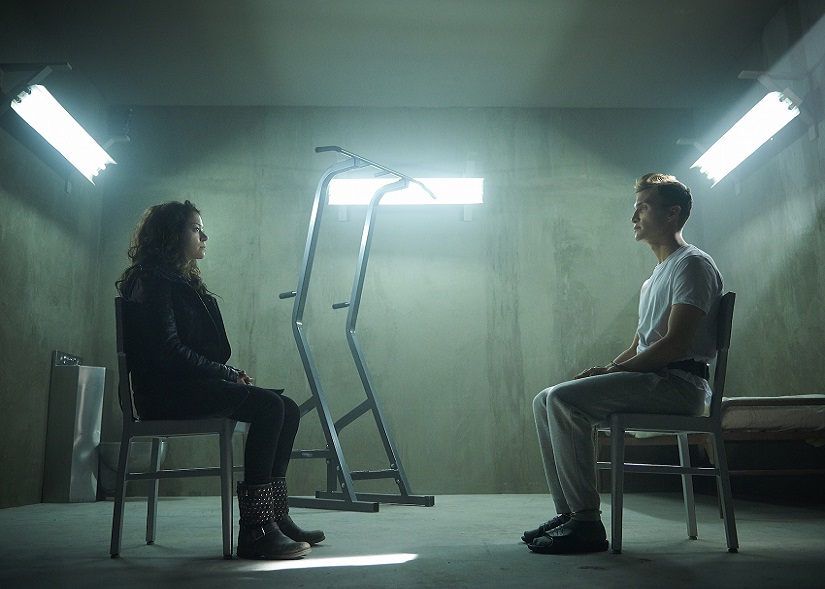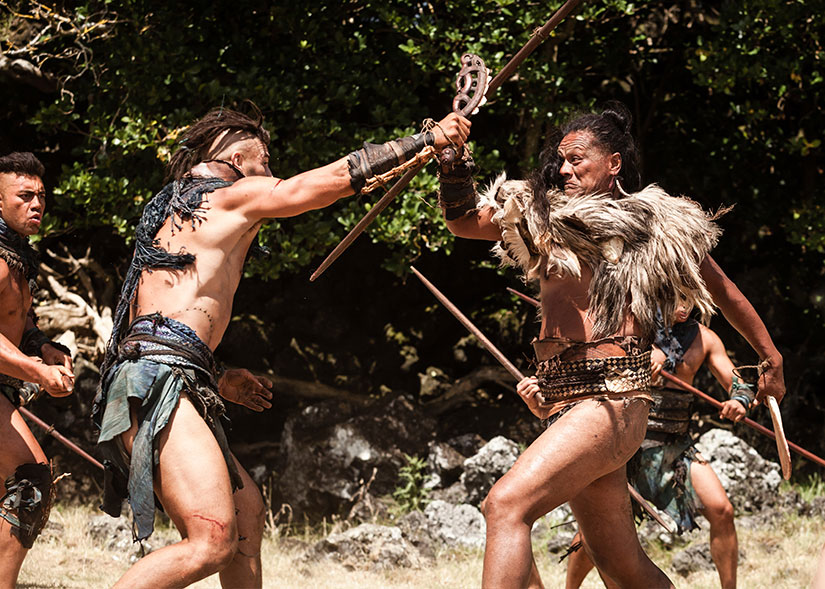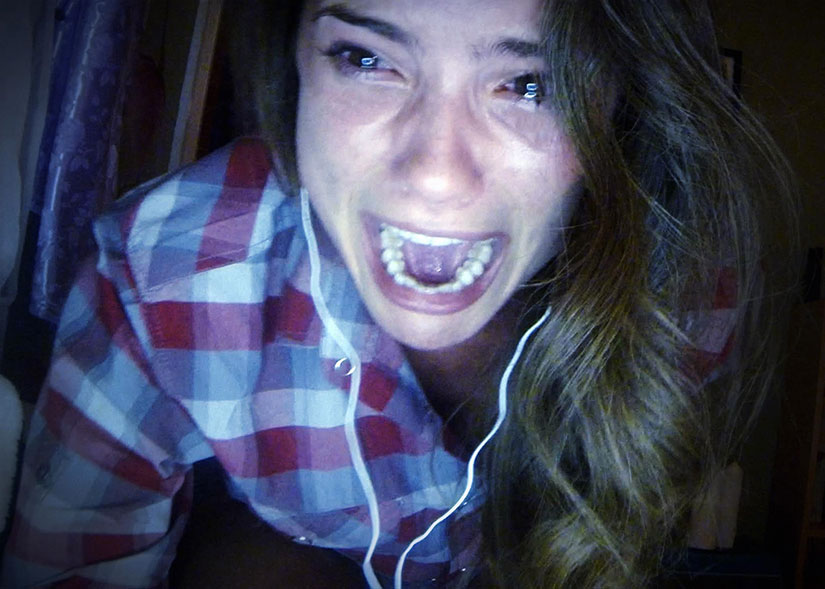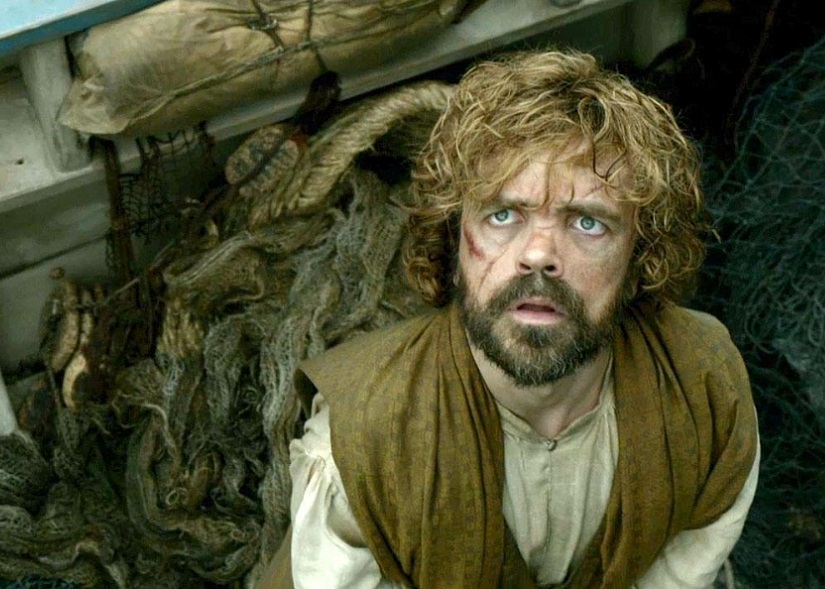[Tribeca Review] Palio
The Palio is a horse race that's been held in the Italian city of Siena since 1656. Twice each year in the summer, the 14 districts of the city pick horses and hire jockeys to represent them. The riders dash around the square for 90 mad seconds while the crowds watching from the ground and the windows cheer them on. Some horses skid into walls during a sloped right-angle turn, others slip and tumble and bring bodies down with them in a pile. Only first place matters.
And the race is just part of the intrigue.
Palio is a documentary shot and edited with the verve of a narrative thriller. It's exhilarating, it's exhausting; spiked everywhere with ancient history, colorful local yarns, and the myths of conquering heroes. Director Cosima Spender has crafted a sports movie by way of Spaghetti westerns, and yet it's so much more. There are multiple surprises nested in this Sienese tradition, and there's rarely if ever a lull in the action.
Palio
Director: Cosima Spender
Rating: N/A
Release Date: April 18, 2015 (Tribeca)
The primary focus of Palio isn't the personality of the districts but rather the men who ride the races. The jockeys have no allegiance to anyone but themselves, we're told. Many are out-of-towners. They're mercenaries working for the highest bidder, and they're hired to ride a horse that's picked in a draft process rather than a horse they might have worked with in the off-season. There's a love/hate relationship between the jockeys and the people. When a jockey wins a race, they are glorified. When a jockey loses, crowds get crazy. Spender shares archival footage of a losing Palio jockey pulled to the ground, dragged, and absolutely brutalized by rabid spectators.
Jockey Andrea Degortes, nicknamed Aceto, won 14 Palios from 1965 to 1992. He's a larger-than-life figure, all machismo and swagger for the brief moments of screentime he has. Yet despite victories, he recounts on camera a single loss that caused him to go into hiding. He legitimately feared for his life.
There's a tale of generations in Palio. Gigi Bruschelli is one of the more dominant jockeys in action. He's won 12 Palios and wants to tie and unseat Aceto's record while he's still able. (Though if you ask Aceto, Bruschelli's only won 11.) There's also a younger jockey, Giovanni Atzeni, whose promise seems limitless. The older jockeys and fans swap stories, and they still have the same arguments they had in the past. Each subject we spend time with is involving in their own way.
There's also a tale of backroom drama in Palio, and it's presented with a sense of conspiracy. Spender catches implications of bribes and other shady dealings for strategic advantage. District rivalries are played against each other, last-second deals might be cut at the crucial point before a race starts. When asked about some of his more questionable methods, Bruschelli smiles like a good mercenary to deflect and conceal.
Palio is constructed so viewers can experience the strange beauty of ritual. While we don't get the full scope of the pageantry, we hear the district names called out—unicorn, giraffe, she-wolf, tower, wave, seashell. The districts wear their colors and sing their songs. The hooves rumble and thunder thanks to the expert sound design. We watch jockeys hoisted in the air as a swell of an Ennio Morricone score elevates the rider to the state of gunslinger, warrior, gladiator. We even catch a glimpse of a special contraption that picks the starting line order at random. Spender presents the object with equal parts majesty and mystery so that the inner mechanisms at play retain their potential for magic.
These rules and these images are like something out of an Italo Calvino story, so charming, so fascinating, such a feast of ideas. And like a Calvino story, I can't wait to revisit Palio for its craft and the excitement it inspires.
For more information on Palio and to find out about screenings/tickets for the Tribeca Film Festival, click here.
[Review] The Road to God Knows Where
The Road to God Knows Where
Director: Uli M. Schüppel
Rating: N/A
Re-Release Date: April 19, 2015 (CIMM Fest)
Nick Cave is truly a man of many talents. He's a critically acclaimed musician, songwriter, screenwriter, novelist and actor. Most recently, he has written the new screenplay for the highly anticipated remake of the hit movie, The Crow, coming to theaters in 2016. With decades of consistent work in Hollywood, Road to God Knows Where stretches back to the beginning of his career at the 1989 American tour with Nick Cave & The Bad Seeds. Having been originally released in 1990, the film is being re-released in theaters and festivals around the country, making a much bigger splash than it ever has before.
[youtube id="DdqHptzBHx4"]
The first thing you should know about Road to God Knows Where is that it's not a concert film, and more about the creative side of the music business as it chronicles The Bad Seeds' North American tour over February and March of 1989. Although the overall pacing is rather slow, filmmaker Uli Schueppel's student film sprinkles in a few live show moments, with long intervals back stage footage, on the tour bus, in hotels, in conflict with promoters, and behind-the-scenes of photo shoots and interviews, providing a realistic approach to what it's like on tour with a rock 'n' roll band.
The film was shot in high contrast black and white, setting the Winter's tone and reminding us of the time period when this was filmed. We often see glimpses of Cave's increased interest to remain low key as a writer and artist, than as a celebrity. By the end of the film, Cave expresses content in ending the tour, as it had flowed just as slow to the viewer as to The Bad Seeds alike.
[Tribeca Review] The Survivalist
In most post-apocalyptic movies, the predominant colors are brown and gray, as if the only things that can exist in this fallen world are dirt, soot, and some muddy combination of the two. In Stephen Fingleton's assured feature film debut, The Survivalist, the post-apocalytic world is green instead, lush and overgrown now that the human population is too low to mess it up. Yet like Werner Herzog said about the anarchy of the jungle, this kind of wildness is cruel, and everywhere it's full of murder and death.
The world of The Survivalist isn't just overgrown, though. It's quiet out there, and in that sinister, a-little-too-quiet way. Our title character (Martin McCann) lives on his own in the wilderness in a sustainable cabin for one. Think Henry David Thoreau's Walden, but with the occasional raiding band of cannibal scavengers.
The Survivalist
Director: Stephen Fingleton
Rating: N/A
Release Date: April 16, 2015 (Tribeca)
The survivalist doesn't say a word as he goes about a series of routines: he buries a body, he chops firewood, he plants vegetables, he makes lantern oil, he jerks off. When a mother and daughter (Olwen Fouere and Mia Goth) arrive asking for food, there's finally some dialogue. They look like a pair of backpackers, but their mere presence is menacing. What the two women are asking for may not match their motives, and the survivalist's intentions may not be so pure either. The way they negotiate suggests that this is how the world works now: all interpersonal interactions are types of transactions (even sex) carried out with quiet suspicion.
The lack of dialogue in The Survivalist is so full of potential meaning and scheming thanks to the grim look of the cast, and Fingleton finds surprising power in his expert control of images and silences. The control is apparent with his clever presentation of a graph that opens the film. A red line courses along a black screen representing the increase of human population since the middle ages. A blue line appears representing oil production, and the two lines rise together, abandoning specific decades and centuries. Eventually the blue line dips from view, and we follow the red line as it changes its orientation on the screen into decline.
That's the history of a post-apocalyptic world told in two phrases, a handful of numbers, two lines, and the illusion of motion.
When one of the characters is in danger, a crane shot moves over a field of tall grass with controlled purpose—like the rise and fall of the infographic line, like the dread of a drawn-out note on violins. The audience sees the danger in the field that our hero can't see, and the audience also knows something about the situation that our hero doesn't realize.
The Survivalist takes advantage of the limitations in a character's knowledge. It enhances a number of tense moments throughout the film, where a brief beam of light in the dark is a herald of doom, or even the way a character selects and holds a garden tool seems like a prelude to murder. Everything and everyone is so on edge because the world is out to get them. The Survivalist is all about the pervasive suspense of the quiet and unseen world, and also the unknown and unspoken aims of other people.
Fingleton's visual panache drives most of the film's mood, though the grounded performances lend subdued desperation to the proceedings. McCann has a feral kill-or-be-killed edge, and Fouere has a fox-like mien that suggest she's always calculating her next move; Goth seems so withdrawn, by contrast, and it's difficult to tell what her character's feeling or if she feels much at all anymore. That's the reality of the world of The Survivalist, though there's something harsher that all the characters have come to accept: even small changes in routine can mean the difference between life and death.
For more information on The Survivalist and to find out about screenings/tickets for the Tribeca Film Festival, click here.
[Review] Theory of Obscurity: a film about The Residents
Theory of Obscurity: a film about The Residents
Director: Don Hardy
Rating: N/A
Release Date: April 19, 2015 (CIMM Fest)
After receiving rave reviews at SXSW this year, Theory of Obscurity: a film about The Residents came highly recommended for it's CIMM Fest (Chicago International Movie and Music Fest) screening. So who are The Residents?, this is the question that the film tries to answer, but the answer doesn't come easy. Stemming from a group of creative misfits from Shreveport, La., drawn to and discovered in the San Francisco Bay Area around 1970, they’re a band, they're filmmakers, artists, pop culture historians, they’re a permanent exhibit at MOMA, and they have managed to stay completely anonymous until now.
[youtube id="Ov5EqmOeuPY"]
Unknown to many, Theory of Obscurity does a good job digging deep into The Residents' story as director Don Hardy managed to interview many well known industry folks as testament to their history and lasting influence. There are also former collaborators (musicians and artists), most famously including Penn Jilette, sharing their personal experiences with The Residents. Interviews also include long time band affiliates, including Primus, Devo, Ween, Simpson's creator Matt Groening, and countless fans, explaining how and why this group came to be so influential to them.
Another huge part of the film is on the The Cryptic Corporation, The Residents’ management company, formed in the early 70's to oversee and manage all of their work. Founders of the Cryptic Corporation speak quite a bit about the band’s business and their own involvement. Altogether, the film is about art. It's is a quirky and often comedic form of story telling on how a collective group of people remained anonymous for 40 years, and how they came to be part pop culture history, still touring the world today.
[This Week In TV] Orphan Black; Louie; Gotham
This Week in TV is a weekly feature reviewing the best, worst and most interesting episodes of television from the past seven days. The plan is to cover a wide variety of shows, but not always the same ones each week, so let us know in the comments which ones you’d particularly like to read about. This week sees the return of the Clone Club with Orphan Black's third season premiere, Louie C.K. discovering the unexpected benefits of bad choices in Louie, and Gotham return after a six-week hiatus.
[Review] The Dead Lands
The Dead Lands
Director: Toa Fraser
Rating: R
Release Date: April 17, 2015 (VOD and limited release)
Hongi (James Rolleston) is the lone survivor of an attack by another tribe that led to the death of his Chieftan father and the rest of his tribe. With the rival killer, Wirepa (Te Kohe Tuhaka), still traversing the lands, Hongi heads to The Dead Lands in search of a mysterious being known for his fighting prowess. When Hongi meets the Warrior (Lawrence Makoare), their unusual relationship builds towards a camaraderie in which Hongi is able to channel his inner strength. However, Wirepa and his tribe are ruthless, posing a serious threat to the outnumbered Hongi and Warrior in a time when ruthless savagery goes a long way.
[youtube id="6n9WK1BtvFo"]
The Dead Lands' biggest selling point is its setting in pre-Colonial New Zealand, as well as its focus on the Maori, a group of indigenous New Zealanders. The film offers a rare glimpse at different aspects of Maori culture, like their religion, language, traditions, and especially their martial arts. While the fight scenes are exciting, they're few and far apart with a story that's rife with cliches and stereotypes about revenge, adulthood, father/son dynamics, lone wolves, enigmatic entities... the list goes on and on.
The Dead Lands would have benefited by either focusing on the action elements or the dramatic/spiritual elements. I understand some type of narrative or backstory was important to link the fight scenes together, but as we've seen in recent years, an action film can be light on story and still be entertaining and successful in spite of a weak narrative (re: The Raid: Redemption). The decision to include more backstory could be due to wanting to highlight and illustrate a culture that hasn't been in the spotlight, but the film feels too unfocused because of it.
[Review] Unfriended
Unfriended
Director: Leo Gabriadze
Rating: N/A
Release Date: March 13, 2015 (SXSW)
Billed as ushering in "a new era of horror," Unfriended had quite the tagline to live up to leading up to its SXSW premiere. As technology and horror continue to grow alongside one another, many young filmmakers are utilizing creative ways to incorporate what's become everyday life into the genre that loves to twist and subvert it. Something that has been toyed around with in recent years is utilizing multiple "screens" to tell the story. For example, Nacho Vigalondo's Open Windows told the entire film through screens a la security cameras, laptops, cell phones, etc.
Similar to the aforementioned film comes Unfriended, but raises the stakes (and technical difficulty) of telling a gripping, compelling horror film completely through a teenage girl's laptop. Does Unfriended ultimately succeed in its attempt of truly ushering in this new era of horror, or does it become yet another failed attempt to modernize horror films?
[youtube id="Zha4RNos8vo"]
On the anniversary of their high school classmate Laura Barns' (Heather Sossaman) death, Blaire (Shelley Hennig), Mitch (Moses Jacob Storm), Jess (Renee Olstead), Adam (Will Peltz), Ken (Jacob Wysocki) and Val (Courtney Halverson) are having a normal night, video Skyping one another. However, a mysterious, unseen stranger named "billie227" claims to be Laura and is seeking revenge for a humiliating video that led to her suicide. To accomplish this, "billie227" pits the friends against one another as their deepest secrets are revealed, threatening to not only ruin friendships, but could lead to untimely deaths.
The film can be a bit jarring to watch as everything plays out through Blaire's laptop, immersing the audience and having them become a part of the film as another unseen voyeur watching high schoolers fight amongst one another. At the same time, it's very reflective of our modern society where technology has replaced such intimate meetings just a generation earlier would have by physically meeting one another. While I'm only in my late 20s, I never experienced group Skype calls with people outside of conference calls for work, so the immersion of contemporary high schoolers' interactions and essentially becoming "one of them" adds an extra layer of tension once the horror truly begins.
It's easy for experimental genre films to be forgotten once the festival circuit has ended, but Unfriended is definitely not one that will be forgotten easily. With NBC Universal's backing, the film is destined to have some minor success at the box office, and will find a devoted audience. It may not reach Paranormal Activity levels, but I can see Unfriended serving as a stepping stone to both cast and crew alike.
[This Week In TV] Game Of Thrones; Marvel's Daredevil; Mad Men; Better Call Saul
This Week in TV is a weekly feature reviewing the best, worst and most interesting episodes of television from the past seven days. The plan is to cover a wide variety of shows, but not always the same ones each week, so let us know in the comments which ones you’d particularly like to read about. This week tackles the fifth season premiere of Game Of Thrones, Marvel adding a third series to their TV bow with Daredevil on Netflix (review covers first three episodes only), Mad Men's return for the concluding part of its final season, and the finale of Better Call Saul's first season.


